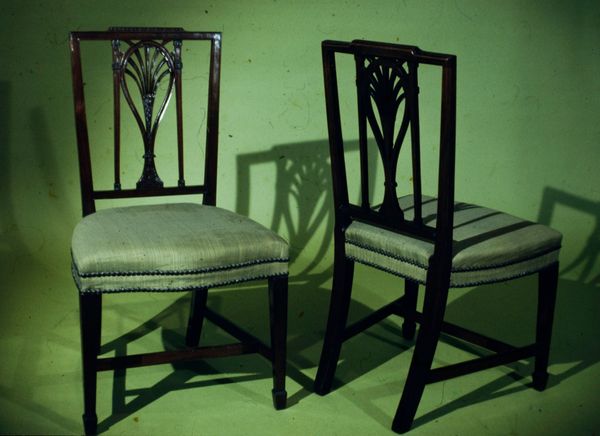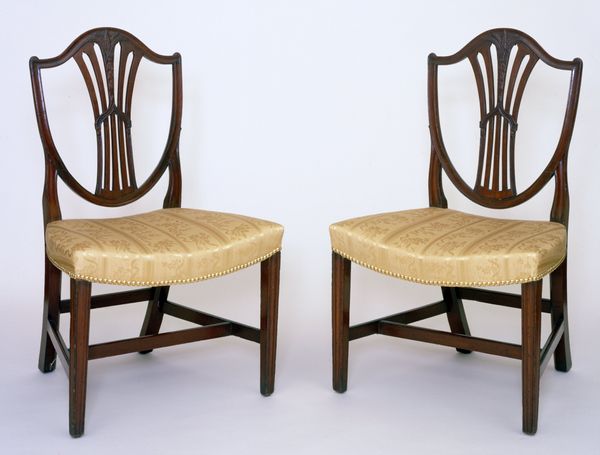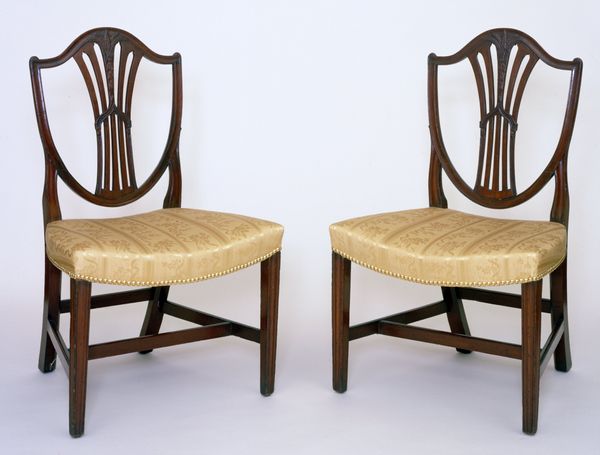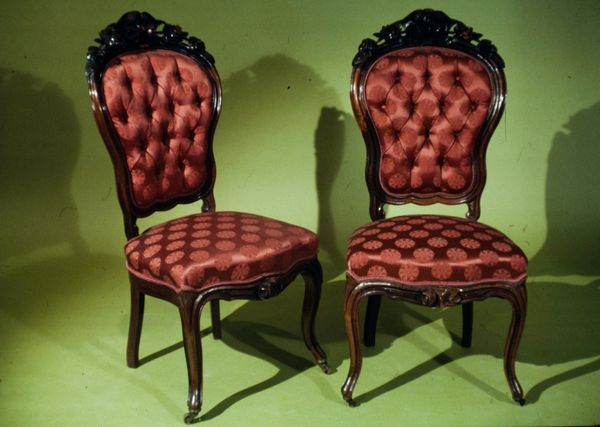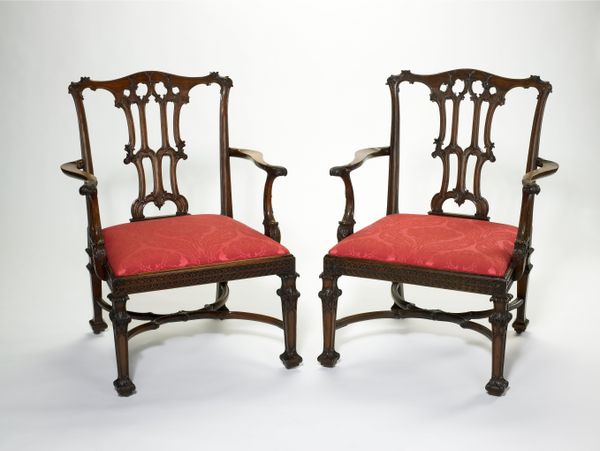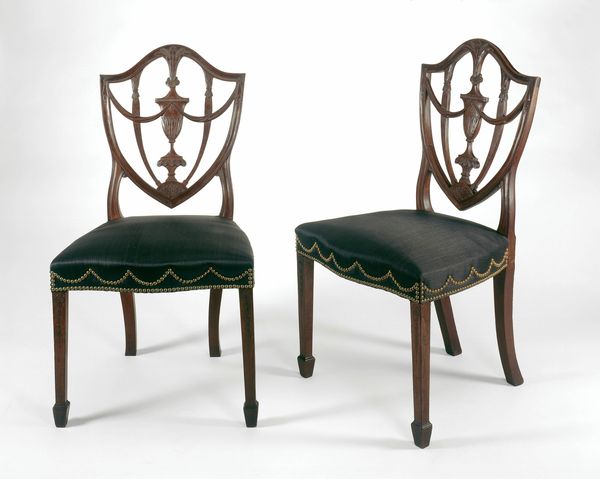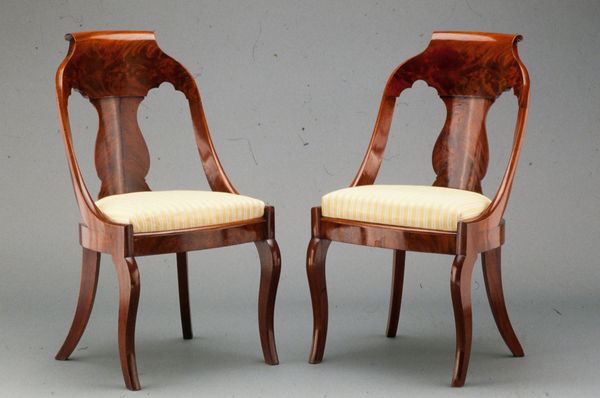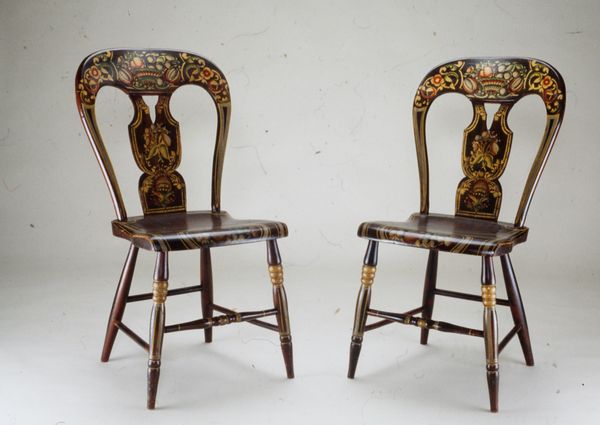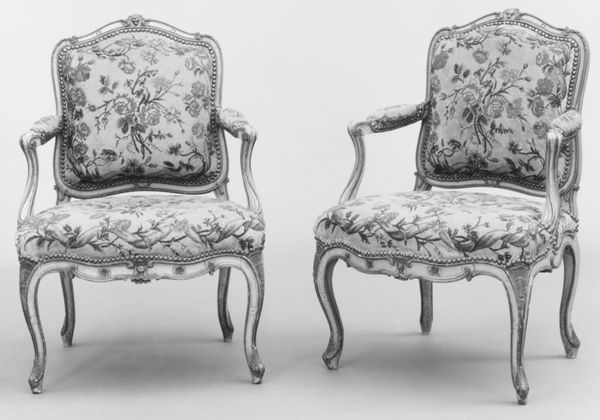
wood
#
portrait
#
neoclacissism
#
furniture
#
united-states
#
wood
#
metal and woodwork
Dimensions: 34 1/2 x 20 1/2 x 17 1/4 in. (87.63 x 52.07 x 43.82 cm)
Copyright: Public Domain
Curator: These square-back Sheraton side chairs, crafted between 1790 and 1800, offer a glimpse into late 18th-century American furniture design. They exemplify the Neoclassical style's influence. Editor: Immediately, I'm struck by their formality and restraint. The dark wood creates a sharp contrast with what seems to be light green upholstery. The composition is very linear, precise. Curator: Precisely! That linearity stems from the Neoclassical emphasis on order and reason, inspired by ancient Greek and Roman art. Furniture became less ornate, favoring clean lines. These chairs were likely intended for a relatively wealthy American household, perhaps signaling refined taste and adherence to new social ideals associated with republicanism. Editor: Notice how the dark wood emphasizes the verticality, yet there's a delicate interplay with the horizontal lines. Also, the stylized elements in the back – almost like abstracted columns and arches – create an interesting tension between rigid geometry and more fluid shapes. Curator: That's a fantastic point. Those stylized motifs you noticed do, indeed, hearken back to classical architectural forms, subtly reinforcing that sense of historical continuity and cultural aspiration, which was so important in the young Republic. Chairs like these were important markers of social standing, and influenced by British design. Editor: Thinking about that tension... does it successfully blend severity and refinement? I wonder. Curator: That’s part of what makes them compelling – this balancing act of social performance. They reflected evolving political sensibilities expressed in interior design. Editor: This really reveals how even utilitarian objects contain multitudes of aesthetic intention and class narrative. Curator: Indeed! And they invite us to consider the role of design in shaping identities.
Comments
No comments
Be the first to comment and join the conversation on the ultimate creative platform.
